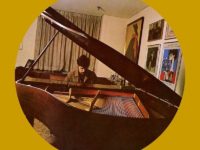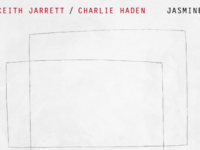One of three jazz-legend siblings, Hank Jones was perhaps as unassuming as his brother Elvin (nine years younger, famously of the John Coltrane group) was the outsized extrovert.
Feathery light, then concisely powerful at the piano, Hank concluded an intellectual, often overlooked eight-decade career on Sunday when he died at age 91. It wasn’t just because he didn’t demand attention. Too often, I think, Jones remained undervalued simply because he didn’t write that signature standard.
Yet Jones — born July 31, 1918, in Vicksburg, Miss., as the eldest of a trio that also included the late big-band trumpeter Thad Jones, who was five years Hank’s junior — would make his own mark as a memorably sensitive intepreter, with both delicate balance and stately calm.
Eventually settling in Pontiac, Mich., Jones was one of the music’s peerless, almost magisterial accompanists, primarily because of his inate sense of style and harmony.
Sometimes, as when Hank Jones played with Ella Fitzgerald, Johnny Hartman, Julian “Cannonball” Adderley or Lionel Hampton, you might not even notice his subtly important support work. But the infrastucture he provided was no less critical than the unseen two-by-fours holding up every ordinary-looking subdivision.
Jones, though he grew up in the swing era of the 1930s, never shyed away from pairing with leading lights in the subsequent styles, beginning with bebop in the 1940s. He started with Artie Shaw, Benny Goodman and Billy Eckstine, but later worked with Fitzgerald, Lester Young and Billie Holiday then found his way to Charlie Parker, Milt Jackson, Adderley and Miles Davis — and, finally, to contemporary jazz performers like Charlie Haden, Ron Carter, Tony Williams, Joe Lovano and Dave Holland.
 Thad Jones died in 1986, followed by Elvin in 2004. Hank’s passing ends a familial jazz dynasty that blazed the path for the Marsalises today.
Thad Jones died in 1986, followed by Elvin in 2004. Hank’s passing ends a familial jazz dynasty that blazed the path for the Marsalises today.
In his 1950s zenith, Hank Jones was said to have appeared on as many as five recording sessions a week, and sometimes as many as twice that many. He counted amongst his greatest influences the disparate pianists Art Tatum, Teddy Wilson and Fats Waller. By the late 1970s, in fact, Jones had helped propel the Waller-inspired Broadway musical “Ain’t Misbehavin'” to the 1978 Tony Award for Best Musical.
Out front, never his most famous work as a first-call accompanist, I always thought Hank Jones’ best effort was with Haden on the gripping “Steal Away,” a perfect marriage of his famous grace-and-guts style of playing. Recorded in 1994 for Verve, the lovingly crafted spirituals, hymns and folk songs on “Steal Away” earned two Grammy nominations.
Jones’ 1956 solo album for Savoy, available now as “Solo Piano” on Fresh Sound, is one of the more highly regarded individual piano recordings in jazz history. I’d count 1989’s EmArCy recording “The Oracle” (with Holland and drummer Billy Higgins) among Jones’ must-have turns as a leader, as well. He shows a flair for the subsequent joys of Coltrane, without losing the stately command that had already become a calling card.
Holland also appears on 1989’s “Lazy Afternoon” (Concord), with a recommended take on J.J Johnson’s “Lament.” Ken Peplowski is on alto sax and clarinet. Circling back, Herbie Mann — then a 25-year-old flute player, not yet so inclined to fusion — adds an interesting touch to 1955’s “Bluebird,” also on Savoy.
That Haden record, though, remains a favorite.
There is a timeless quality, so perfect for Jones, and a gorgeous unnostalgic reverie in their renditions of tunes like “Nobody Knows the Trouble I’ve Seen,” “Swing Low, Sweet Chariot,” “Sometimes I Feel like a Motherless Child” and “We Shall Overcome.”
- How Deep Cuts on ‘Music From Big Pink’ Underscore the Band’s Triumph - July 31, 2023
- How ‘Islands’ Signaled the Sad End of the Band’s Five-Man Edition - March 15, 2022
- The Band’s ‘Christmas Must Be Tonight’ Remains an Unjustly Overlooked Holiday Classic - December 25, 2016





